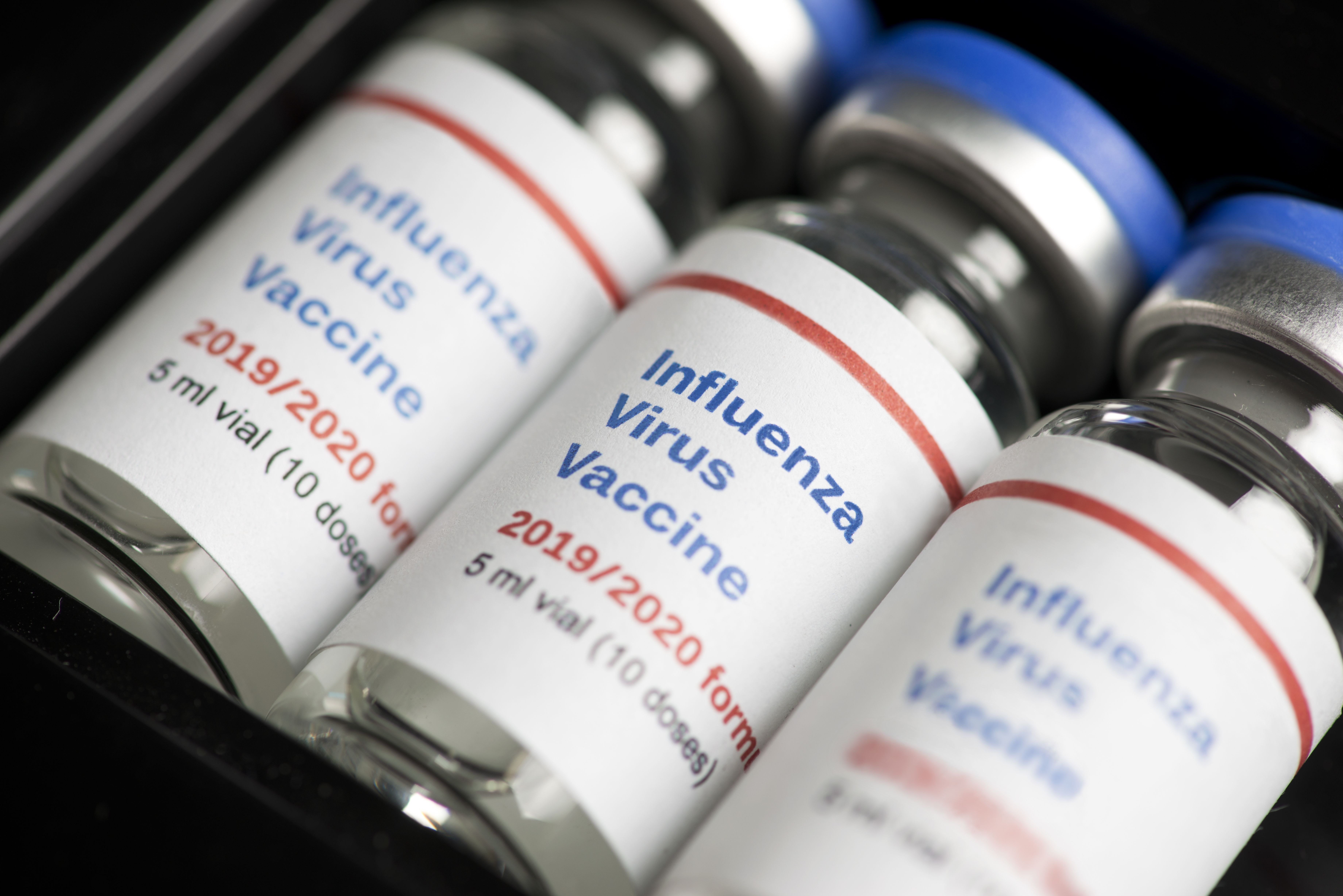
The analysis, conducted by Kaiser Family Foundation (KFF), found that 52% of the overall US population received a flu vaccine during the 2019-2020 season, with vaccination rates ranging from 44% in Nevada to 61% in Rhode Island.
Less than 50% of the population received a flu vaccine in 12 states: Tennessee, Alabama, Louisiana, Texas, Wyoming, Arizona, Georgia, Mississippi, Alaska, Idaho, Florida, and Nevada.
Additionally, every state as well as the District of Columbia had less than 70% of the population vaccinated for the flu, falling short the United States’ Health People 2030 goal. When taking into account race and ethnicity, only the District of Columbia achieved a vaccination rate for White adults above the 70% target (71%).
Lower rates of vaccination were recorded among Black, Hispanic, and Indigenous adults compared with White adults, suggesting gaps and racial disparities in vaccine access. The average vaccination rate by race and ethnicity amounted to 46% among Black adults, 47% among Hispanic adults, and 55% among White adults.
Black people had lower rates of vaccinations compared with White counterparts in 36 states. The biggest gaps in rates were in the District of Columbia (44% vs 71%), Nevada (30% vs 47%), Maryland (49% vs 64%), and New Jersey (45% vs 59%). Oklahoma was the only state where Black people had higher rates of flu vaccination than White people (58% vs 54%).
In 40 states, Hispanic people had lower rates of vaccinations compared to White people, with the largest gaps being in Florida (37% vs 50%), Connecticut (54% vs 64%), and Michigan (41% vs 53%). Hispanic people had higher rates than White people in 7 states: Alaska, Arkansas, Louisiana, Mississippi, Montana, New Hampshire, and Wyoming.
The analysis authors noted that, “achieving a high COVID-19 vaccination rate among people of color will be particularly important because they are bearing a heavy, disproportionate burden of the disease, and population immunity is not likely to be reached without high vaccination rates across all communities.”
In the KFF/The Undefeated Survey on Race and Health published in October, only 17% of Black Americans said they would get a vaccine for COVID-19 if it was determined to be safe and free to access, compared with 37% of White Americans. The largest cited reasons were concerns about the vaccine’s safety profile and distrust of the health care system.
In addition to race and ethnicity, age played a part in vaccination rates, with seniors aged 65 and older receiving flu vaccines at a rate of 70%, ranging from 54% in Alaska to 70% in North Carolina. In total, 30 states achieved a 70% or higher rate of vaccination among seniors.
Vaccinations for children aged 6 months to 17 years were vaccinated for the flu at an average rate of 64%, ranging from 52% in Mississippi to 78% in Rhode Island.
Nonelderly adults, encompassing those aged 18 to 64, had an average rate of vaccination of 42%, ranging from 33% in Florida to 52% in Rhode Island, with no states achieving the population target of 70%.
“As states develop COVID-19 vaccination plans, age will likely be a key factor in determining priority groups, due to the increased risk COVID-19 poses for older adults,” noted the authors.
Further, nonelderly adults varied in vaccination rates depending on whether they had an underlying health condition. The average rate for nonelderly adults with an underlying health condition to receive a flu vaccine was 51% (38% to 61%), and 40% (31% to 50%) for those without one.
"difficult" - Google News
November 05, 2020 at 08:30PM
https://ift.tt/2I6jd2K
Study on Flu Vaccination Rates Suggests COVID-19 Immunity May Be Difficult to Achieve - AJMC.com Managed Markets Network
"difficult" - Google News
https://ift.tt/2VWzYBO
https://ift.tt/3d5eskc
Bagikan Berita Ini















0 Response to "Study on Flu Vaccination Rates Suggests COVID-19 Immunity May Be Difficult to Achieve - AJMC.com Managed Markets Network"
Post a Comment